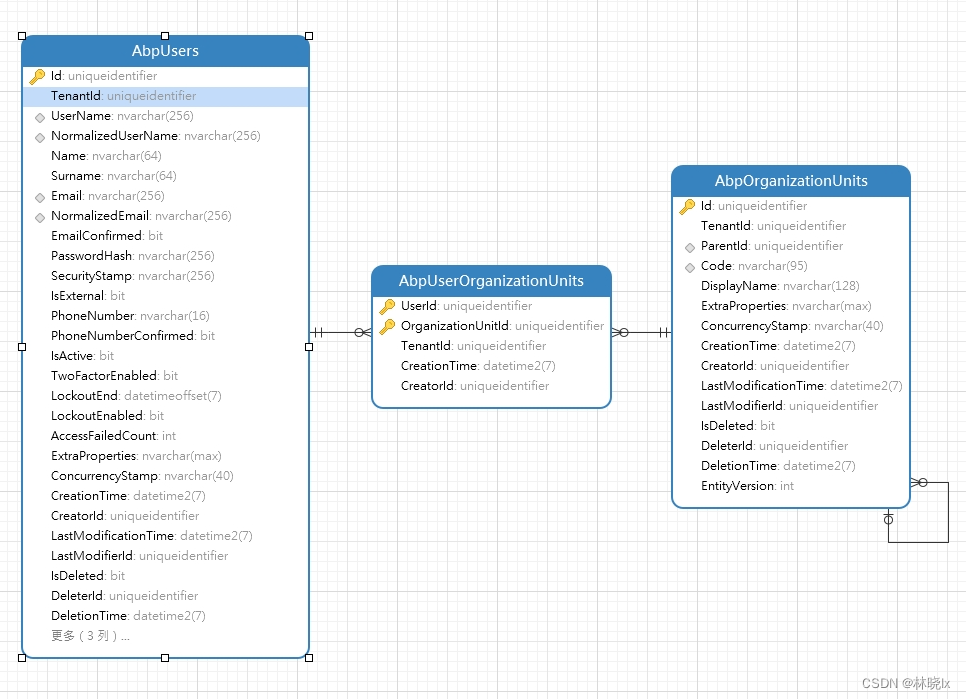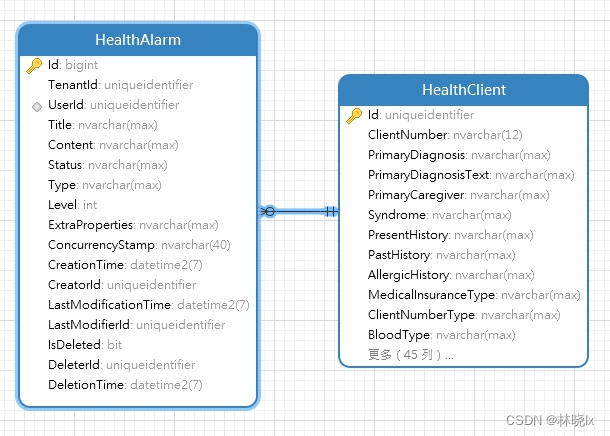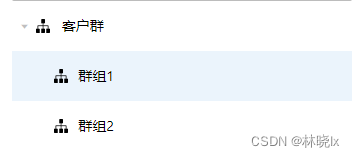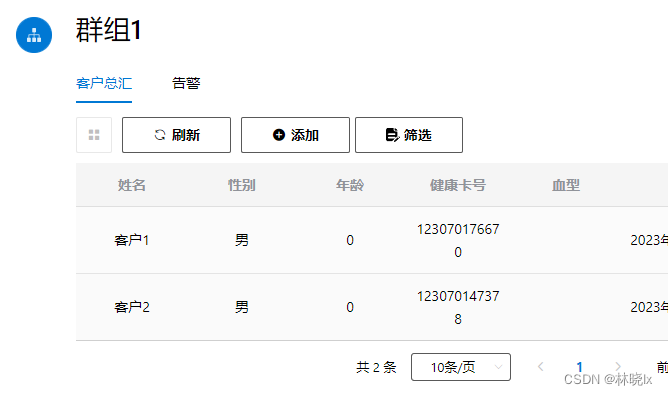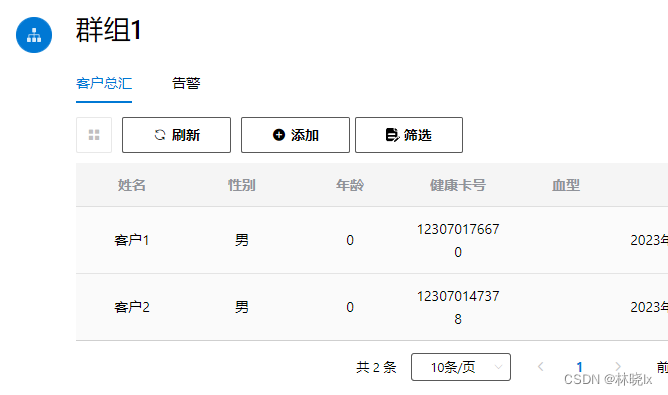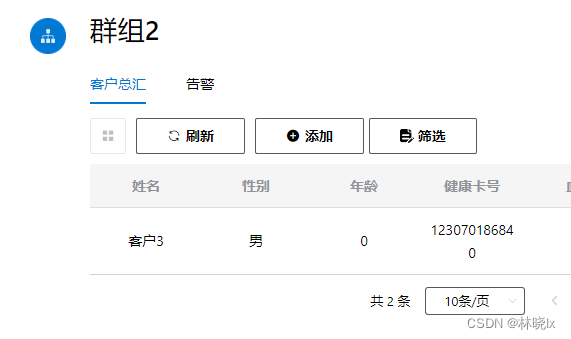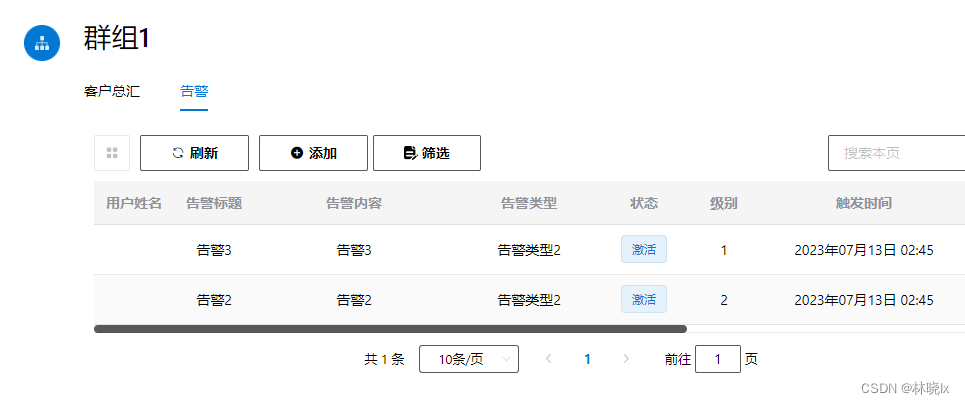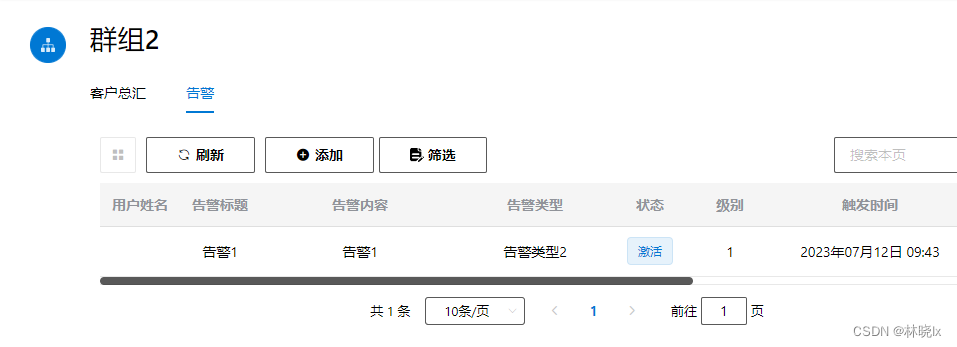之前我们实现了Employee,Alarm管理模块以及通用查询应用层。
Employee的集合查询业务,是通过重写CreateFilteredQueryAsync方法,来实现按组织架构查询的过滤条件。
我们将这段逻辑代码提取到通用查询应用层中,便可实现在任何业务的按组织架构查询。
原理 查询依据
在Abp中,组织架构和用户是通过中间表AbpUserOrganizationUnits实现多对多的关系。模型如下图所示:
通过LINQ查询
EmployeeAppService中,CreateFilteredQueryAsync方法组织架构的过滤条件代码如下:
1 2 3 4 5 6 7 8 9 10 11 12 13 var organizationUnitUsers = await organizationUnitAppService.GetOrganizationUnitUsersAsync(new GetOrganizationUnitUsersInput() { Id = input.OrganizationUnitId.Value }); if (organizationUnitUsers.Count() > 0) { var ids = organizationUnitUsers.Select(c => c.Id); query = query.Where(t => ids.Contains(t.Id)); } else { query = query.Where(c => false); }
通过反射和动态Lambda表达式查询
CreateFilteredQueryAsync是通过业务用户的IRepository获取实体的IQueryable 然后通过query.Where()实现了按组织架构的过滤条件。
IQueryable是一泛型类接口,泛型参数是实体类。要想在任意实体实现Where的过滤条件,我们使用动态拼接语言集成查询 (LINQ) 的方式实现通用查询接口,有关LINQ表达式,请阅读 LINQ 教程 和有关 Lambda 表达式 的文章。
实现 定义按组织架构查询过滤器(IOrganizationOrientedFilter)接口,查询实体列表Dto若实现该接口,将筛选指定 OrganizationUnitId 下的用户关联的实体。
1 2 3 4 public interface IOrganizationOrientedFilter { Guid? OrganizationUnitId { get; set; } }
重写CreateFilteredQueryAsync方法,代码如下
1 2 3 4 5 6 7 8 9 protected override async Task<IQueryable<TEntity>> CreateFilteredQueryAsync(TGetListInput input) { var query = await ReadOnlyRepository.GetQueryableAsync(); query = await ApplyOrganizationOrientedFiltered(query,input); return query; }
对于OrganizationUnit服务,其依赖关系在应用层,查找指定组织架构的用户将在CurdAppServiceBase的子类实现。创建一个抽象方法GetUserIdsByOrganizationAsync
1 protected abstract Task<IEnumerable<Guid>> GetUserIdsByOrganizationAsync(Guid organizationUnitId)
创建应用过滤条件方法:ApplyOrganizationOrientedFiltered,在此实现拼接LINQ表达式,代码如下:
1 2 3 4 5 6 7 8 9 10 11 12 13 14 15 16 17 18 19 20 21 22 23 24 25 26 27 28 29 30 31 32 33 34 35 36 37 38 39 protected virtual async Task<IQueryable<TEntity>> ApplyOrganizationOrientedFiltered(IQueryable<TEntity> query, TGetListInput input) { if (input is IOrganizationOrientedFilter && HasProperty<TEntity>("UserId")) { var property = typeof(TEntity).GetProperty("UserId"); var filteredInput = input as IOrganizationOrientedFilter; if (filteredInput != null && filteredInput.OrganizationUnitId.HasValue) { var ids = await GetUserIdsByOrganizationAsync(filteredInput.OrganizationUnitId.Value); Expression originalExpression = null; var parameter = Expression.Parameter(typeof(TEntity), "p"); foreach (var id in ids) { var keyConstantExpression = Expression.Constant(id, typeof(Guid)); var propertyAccess = Expression.MakeMemberAccess(parameter, property); var expressionSegment = Expression.Equal(propertyAccess, keyConstantExpression); if (originalExpression == null) { originalExpression = expressionSegment; } else { originalExpression = Expression.Or(originalExpression, expressionSegment); } } var equalExpression = originalExpression != null ? Expression.Lambda<Func<TEntity, bool>>(originalExpression, parameter) : p => false; query = query.Where(equalExpression); } } return query; }
请注意,可应用过滤的条件为:
input需实现IOrganizationOrientedFilter接口
实体必须包含UserId字段
否则将原封不动返回IQueryable对象。
应用 在上一章Alarm管理模块中,我们已经写好了AlarmAppService,我们需要为其实现GetUserIdsByOrganizationAsync方法。改造AlarmAppService代码如下:
1 2 3 4 5 6 7 8 9 10 11 12 13 14 15 16 17 18 19 20 21 22 public class AlarmAppService : ExtendedCurdAppServiceBase<Matoapp.Health.Alarm.Alarm, AlarmDto, AlarmDto, AlarmBriefDto, long, GetAllAlarmInput, GetAllAlarmInput, CreateAlarmInput, UpdateAlarmInput>, IAlarmAppService { private readonly IOrganizationUnitAppService organizationUnitAppService; public AlarmAppService( IOrganizationUnitAppService organizationUnitAppService, IRepository<Matoapp.Health.Alarm.Alarm, long> basicInventoryRepository) : base(basicInventoryRepository) { this.organizationUnitAppService = organizationUnitAppService; } protected override async Task<IEnumerable<Guid>> GetUserIdsByOrganizationAsync(Guid organizationUnitId) { var organizationUnitUsers = await organizationUnitAppService.GetOrganizationUnitUsersAsync(new GetOrganizationUnitUsersInput() { Id = organizationUnitId }); var ids = organizationUnitUsers.Select(c => c.Id); return ids; } }
测试 创建一些组织架构,命名“群组”
在不同“群组”下创建一些客户(Client)
在告警管理页面中,创建一些告警,并将这些告警分配给不同的客户
在客户管理中,通过选择不同的组织架构,查询当前“群组”下的客户告警
